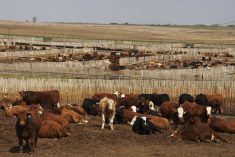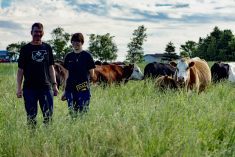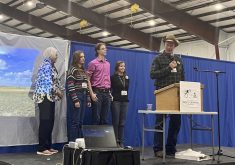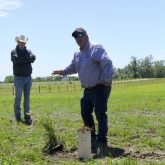Innovative research is reshaping what is known about ammonia and related emissions from feedlots. And that new knowledge may help the industry to adjust its management, shape and react to public policy more effectively.
“Livestock are significant emission contributors,” says Dr. Sean McGinn of Agriculture and Agri-Food Canada, a long-time researcher in the emissions area.
“We know beef feedlots are hot spots of ammonia emissions on the landscape, but we didn’t know as much about the dynamics of ammonia emissions from feedlots. For example, we didn’t have real numbers from actual feedlots on how much is emitted, how much is deposited on nearby soil and how much re-emission occurs when that happens.”
Read Also
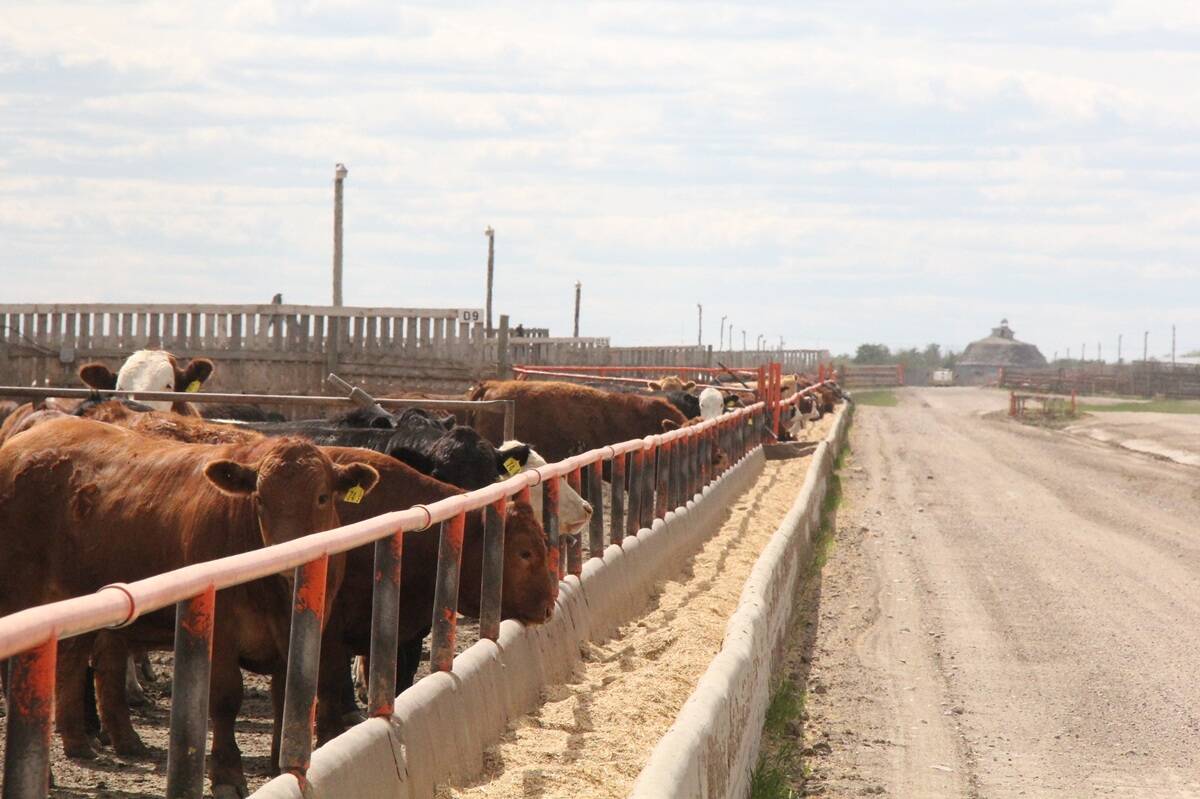
Unwinding the fibre in feedlot cattle diets
Research into how barley rolling method and undigestible NDF levels affect animal performance and digestive health in finishing diets
That’s what McGinn and his colleague Dr. Tom Flesch at the University of Alberta set out to understand in a two-year project funded by the Alberta Livestock and Meat Agency.
The other part of their research involves measuring methane and nitrous oxide, two prominent greenhouse gases. Methane is produced by cattle due to the anaerobic digestion of feed in the cow’s rumen and both nitrous oxide and methane come from stored manure in the pens.
The research produced significant results on several fronts from techniques to measure emissions on a commercial scale, to new information on their affect on nearby land and opportunities for mitigation and management.
One major outcome was the adaptation of oilfield technology to measure emissions using open path lasers that move over the feedlot and calculate emission concentrations and wind characteristics. They’re able to measure emissions regardless of wind direction.
In place of older research protocols that place animals in chambers to measure emissions, McGinn says this new technique evaluates the feedlot as a whole. Also, by leaving animals in their natural environment, the laser approach promises more accurate commercial scale results.
This means actual feedlot emission numbers could be gathered for greenhouse gas assessments, an improvement from past practices of using estimates from global sources.
One of the surprises learned from this study was the fact that a significant fraction of ammonia was deposited on the land adjacent to the feedlot and how much was re-emitted into the atmosphere.
“Our results illustrate the dynamics of reactive ammonia in the vicinity of a beef cattle feedlot,” says McGinn. “It confirmed that a large portion of the nitrogen fed as crude protein is volatized from the feedlot’s cattle manure. In the local vicinity of a feedlot, both ammonia deposition (14 per cent of the emitted ammonia) and re-emission occurred. That 14 per cent is a large amount considering a typical feedlot emits one to two tonnes of ammonia per day.”
The amount of this soil-captured ammonia decreased with distance from the feedlot by 50 per cent over 200 metres).
Industry implications
Collectively, the results of this study provide insight into the dynamics of ammonia in the agricultural landscape and illustrate the need for ammonia mitigation to improve the environmental and economic sustainability of cattle feedlots.
“We need better emissions numbers to anchor effective public policy and fairly represent the feedlot industry in that data pool,” says McGinn. “It’s important to have research done before policy is set. The U.S. cattle feeding industry already has specific ammonia emission targets in place.”
Fortunately there are some promising results on new mitigation techniques to deal with methane and ammonia emissions coming out of a second study headed up by Dr. Karen Beauchemin and Dr. Karen Koenig at Agriculture and Agri-Food Canada’s Lethbridge Research and Development Centre.
Perhaps the most dramatic methane control option is a new product in the pipeline designed specifically to manage methane production in ruminants.
“Methane is lost energy and lost opportunity,” says Beauchemin. “The inhibitor 3-nitrooxypropanol (NOP) is a new compound synthetized by a company out of Switzerland specifically to control methane. A feed additive, it interferes with normal digestion process reducing the ability of rumen organisms to synthesize methane, shifting methane energy to a more usable form for the animal.”
In their research, adding NOP to a standard diet reduced methane production by 40 per cent in backgrounding and finishing cattle. Trials have been done in commercial feedlots and it is moving into the registration channels in North America.
“Obviously there are hoops to go through in registration and questions such as pricing and mode of use in the cow-calf sector that would affect industry uptake, but it is a very promising emission control alternative that could be available within three to five years,” says Beauchemin.
Diet manipulation is also promising. For example, increasing the nutritional digestibility of forages through early harvesting increases animal efficiency and reduces methane emissions, says Beauchemin.
“We’re also overfeeding protein in many cases which increases ammonia emissions,” says Koenig. “For example, distillers grains, a byproduct of the ethanol industry, are commonly fed in feedlots. But the nutrients are concentrated and when added to diets as an energy supplement, it often results in overfeeding protein, which increases ammonia emissions.”
One new area of research that may mitigate that, she says, is using plant extracts such as tannins that bind the nitrogen in the animal’s gut and retain it in the manure more effectively to retain its value as fertilizer.
“There are supplements on the market with these products in them already, but we are evaluating them in terms of ammonia and methane management.”
Basically most things that improve efficiency in animal production reduce methane and ammonia production, say Beauchemin and Koenig. They emphasize that while forage does produce methane, forage is a complex system that must be considered as a whole ecosystem with many positive benefits.
The biggest opportunity for improvement in methane emissions is in the cow-calf and backgrounding sector because the rations are highly forage-based. But the low hanging fruit and early research in emission management is focused on the feedlot and dairy sector because diets can be controlled more easily.




